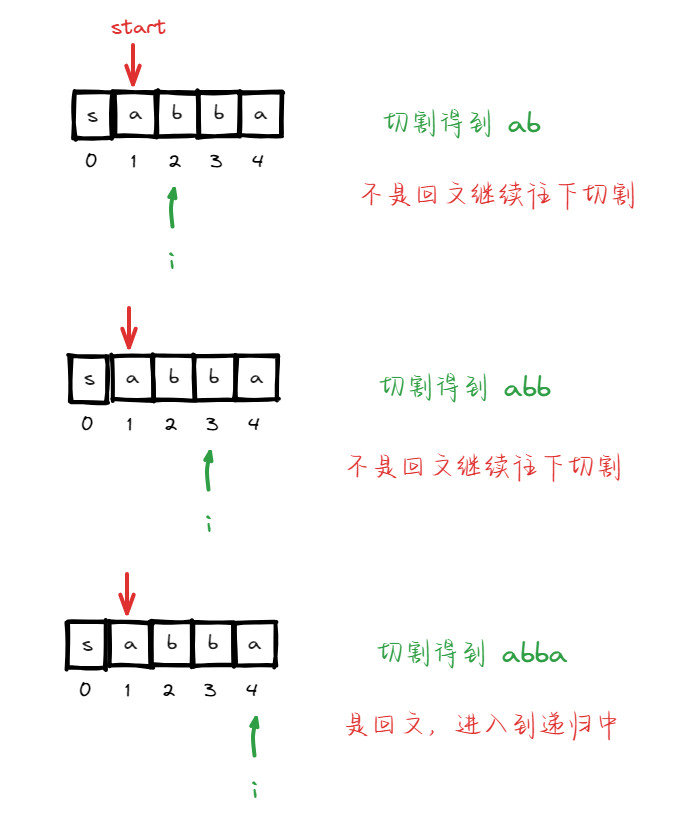1
2
3
4
5
6
7
8
9
10
11
12
13
14
15
16
17
18
19
20
21
22
23
24
25
26
27
28
29
30
31
32
33
34
35
36
37
38
39
| class Solution {
private:
vector<vector<string>> result;
vector<string> path;
public:
bool isReStr(const string& str){
int left = 0;
int right = str.size() - 1;
while(left <= right){
if(str[left] != str[right]){
return false;
}
left++;
right--;
}
return true;
}
void backtrace(string s,int start){
if(start == s.size()){
result.push_back(path);
return;
}
for(int i = start; i < s.size(); i++){
string data = s.substr(start,i - start + 1);
if(isReStr(data)){
path.push_back(data);
backtrace(s,i + 1);
path.pop_back();
}
}
}
vector<vector<string>> partition(string s) {
backtrace(s,0);
return result;
}
};
|
这道题没有能够做出来,尽管对于切割有些思路了,但是对于 substr
方法有些误解(后面详细谈一谈它的用法),导致实际返回的容器中有很多重复项。
再有就是对 s.substr(start,i - start + 1)
语句没有理解透彻,这是用来切割可能要加入到路径中的字符。首先 start
指明要切割字符串的起始地址,而 substr 的第二个参数要填写切割的长度,由于
i 代表的是指向当前字符串的终止位置(不一定就是字符串的最后位置),且最初
i = start,那么至少要切割一个字符,因此是 i - start +
1。由于切割的字符串得是回文字符串才会再次进入循环,
否则一直不断增加切割长度,直到出现回文字符串,否则退出当前循环,这也是为什么要
i - start + 1,假定这次不满足,下一次循环中 i 会自增,而 start
保持不变,也就实现继续切割。
 切割字符串.png
切割字符串.png
再一个重点就是 backtrace(s,i + 1)
,我们注意看传递进去的第二个参数的含义,即
切割字符串的起始位置,你可能会误写成 start + 1,但实际上是 i + 1,因为 i
指向被切割字符的最后的位置,所以下一个被切割字符串的位置是 i + 1。因为
[start,i] 区间内的字符串已经被处理了,所以下一次切割的地址是 i +
1,而不是 start + 1。
1
| string substr (size_t pos = 0, size_t len = npos) const;
|
pos 代表切割字符串的起始地址
len 代表从指定起始地址开始切割的长度
1
2
3
4
5
6
7
8
9
10
| string name = "aahswl";
cout << name.substr(0, 2) <<endl;
cout << name.substr(4, 3) << endl;
|
主要强调第二个切割,明明指定长度加上起始位置已经超出 name
字符串的长度,但还是切割成功,所以即便只能切割到最后两个字符串了(因为按理我们要切割长度为三的字符串),这也是切割成功,返回字符串
wl。
如果 len 等于字符串长度,返回空字符串;如果 len 大于
字符串长度,抛出异常。



